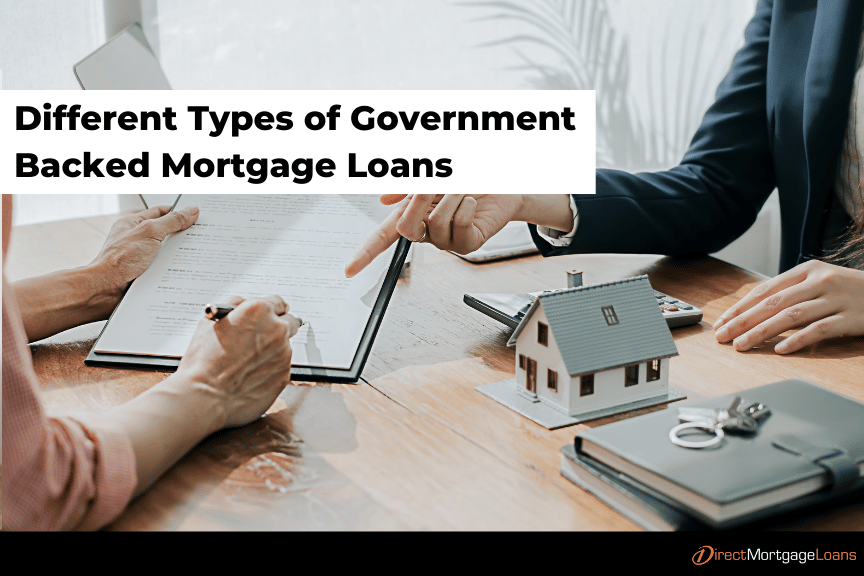Understanding Conventional Mortgage Loans: Benefits and Requirements
Understanding Conventional Mortgage Loans: Benefits and Requirements
Blog Article
The Vital Variables to Think About When Finding Between Fixed-Rate and Variable-rate Mortgage Car Loans
When reviewing mortgage choices, debtors encounter a crucial decision between adjustable-rate and fixed-rate lendings, each providing potential mistakes and unique benefits. Secret factors to consider such as interest rate stability, predictability in regular monthly repayments, and the effects of possible price adjustments can substantially influence long-term financial health and wellness. Recognizing the anticipated duration of homeownership and the general cost of borrowing can shape one's method. As these aspects link with individual economic scenarios and take the chance of resistance, the effects of this option may not be as simple as they seem. What nuances should be prioritized in this important decision-making procedure?
Rate Of Interest Stability
When selecting a home mortgage, recognizing passion price stability is crucial for educated decision-making. Interest prices can considerably influence the general expense of a home loan, and identifying the nature of these rates is essential for borrowers.
On the other hand, variable-rate mortgages (ARMs) begin with lower initial rates that might transform regularly based on market conditions. While this can lead to lower repayments initially, it also introduces unpredictability, as borrowers may face increased payments if rate of interest climb. For those considering an ARM, it is crucial to examine the chance of price modifications, the potential for repayment increases, and the size of the first fixed-rate duration.
Inevitably, the choice in between adjustable-rate and fixed-rate home loans hinges on individual danger resistance and economic scenarios. Comprehending rate of interest rate security helps customers make educated decisions that align with their long-term economic objectives.
Regular Monthly Payment Predictability
While consumers commonly focus on passion price security, the predictability of regular monthly payments is equally important in the home loan selection process (Conventional mortgage loans). Regular monthly repayment predictability plays an important function in budgeting and economic preparation, as it straight affects a home owner's cash money flow and general economic health
Fixed-rate home loans use a constant monthly payment throughout the life of the lending, enabling debtors to expect and intend their expenses effectively. This security can be specifically helpful for newbie property buyers or those on a fixed income, as it eliminates the uncertainty connected with fluctuating settlements.
Alternatively, variable-rate mortgages (ARMs) commonly include reduced initial payments that can change gradually, resulting in possible irregularity in month-to-month commitments. While originally attractive, this changability can make complex economic planning, specifically if borrowers do not represent future price adjustments.
Potential Price Adjustments
In the world of variable-rate mortgages (ARMs), possible rate adjustments represent a significant variable that borrowers need to thoroughly think about. Unlike fixed-rate home loans, where the rate of interest remains unchanged for the life of the finance, ARMs are characterized by fluctuating rates of interest that are linked to market indices. This irregularity can result in considerable changes in regular monthly settlements, impacting the consumer's economic planning and budgeting.
Commonly, ARMs have an initial fixed-rate duration during which the passion rate is steady. Hereafter period, however, the rate changes at predetermined Full Report periods-- generally annually. Consumers must be mindful of the margin and index made use of to compute these modifications, as they directly influence future rates of interest. Furthermore, ARMs commonly include caps that limit just how much the rates of interest can raise at each change and over the life of the financing, which can provide some level of protection versus extreme price hikes.
Recognizing these potential adjustments is important for customers, as they straight affect lasting payment commitments. Examining personal monetary scenarios and take the chance of tolerance is necessary when choosing whether an ARM straightens with one's financial goals.
Loan Term Considerations
Funding term considerations play a pivotal function in the decision-making process for customers selecting in between adjustable-rate and fixed-rate home loans. The length of the finance term significantly affects regular monthly settlements, rates of interest, and overall monetary planning. Fixed-rate home mortgages generally provide regards to 15 to three decades, giving security in regular monthly settlements and predictability in budgeting. This can be specifically appealing for borrowers that plan to stay in the same home long-lasting and choose the certainty of fixed payments throughout the life of the financing.

Inevitably, consumers have to examine their personal circumstances, economic objectives, and market conditions when weighing the effects of loan term choices within each mortgage kind.

General Price of Borrowing
Fixed-rate home mortgages offer foreseeable month-to-month settlements, as the rate of interest rate remains continuous throughout the loan term. This predictability can lead to lower overall expenses, specifically in a stable or declining interest rate atmosphere.
On the other hand, adjustable-rate mortgages (ARMs) normally begin with reduced first rates, resulting in decreased in advance prices. However, these rates can enhance after a preliminary duration, bring about possibly greater long-term costs. Consumers need to think about the regularity and degree of price adjustments, in addition to the overall lending duration, to precisely examine the economic implications.
Moreover, the overall expense of loaning includes not only rate of interest yet additionally fees and various other associated expenses, such as shutting costs and insurance coverage (Conventional mortgage loans). When evaluating mortgage alternatives, consumers must conduct a detailed price evaluation over the life of the funding. By doing so, they can make an informed choice that aligns with their monetary goals and run the risk of tolerance
Verdict
In verdict, picking between fixed-rate and adjustable-rate mortgage click to find out more demands cautious consideration of a number of essential aspects. Interest price stability and month-to-month payment predictability are vital for effective budgeting, while the capacity for price changes in ARMs presents economic uncertainty. In addition, the anticipated period of homeownership and the overall expense of borrowing, consisting of rate of interest and associated costs, need to align with specific monetary circumstances and take the chance of tolerance. Such a thorough analysis will facilitate educated decision-making in home mortgage choice.
Key considerations such as rate of interest rate stability, predictability in regular monthly repayments, and the ramifications of possible price changes can significantly impact long-lasting monetary wellness. Interest prices can dramatically affect the overall cost of a home mortgage, and identifying the nature of these rates is important for debtors. Unlike fixed-rate home loans, where the interest price stays the same for the life Web Site of the loan, ARMs are identified by rising and fall passion rates that are linked to market indices. Furthermore, ARMs often include caps that limit just how a lot the passion rate can enhance at each modification and over the life of the lending, which can give some level of defense versus radical rate walkings.
Passion rate stability and month-to-month payment predictability are vital for efficient budgeting, while the possibility for rate modifications in ARMs presents monetary unpredictability.
Report this page